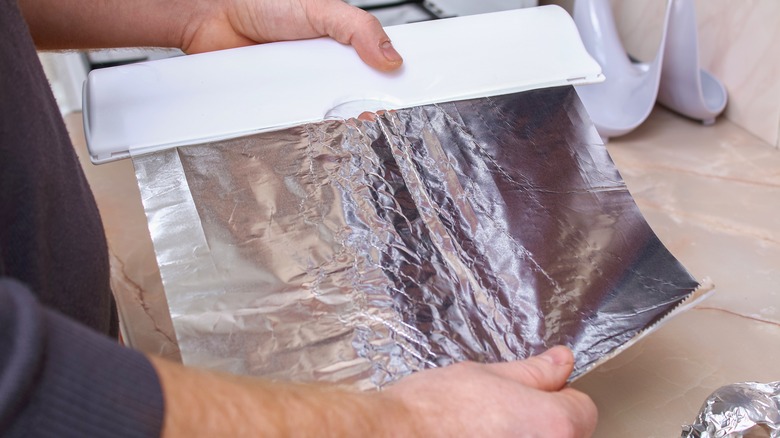This Aluminum Foil Hack Will Revolutionize The Way You Paint Furniture
Painting furniture can be a cumbersome job. First, you need to sand down the entire piece to expose the raw wood underneath, fix any chips or scratches with wood putty, prep the wood for your paint, and then tape down anything you don't want to be painted with painter's tape. That last part can be especially annoying since wrapping things like legs, dowels, and other furniture accents with the adhesive takes patience. But what if there was a faster way? Enter aluminum foil.
You can use tin foil instead to quickly wrap cylindrical features on your wooden furniture, such as legs, decorative columns, posts, and dowels. This is a great painting hack to try since it's low-cost and low-fuss. You don't have to buy any specialty woodworking products. Instead, you can just grab the aluminum foil from your kitchen and see how you like the results. And since all you need to do is wrap the foil around the accent, even a newbie crafter can dip a toe into this hack. Here is how to use aluminum foil to protect your furniture accents during a paint job.
How to use the aluminum foil hack when painting furniture
The reason this hack is so great is because it's so easy. Rather than spending precious time wrapping your painter's tape around furniture legs and posts, you can quickly scrunch the aluminum foil around its entire length in half the time. Simply tear off a sheet proportional to how large the leg or accent is, wrap it around the post, and scrunch it into place. Make sure to apply extra pressure at the top and bottom, ensuring the paint doesn't drip through underneath.
This is best used when you want to paint a piece of furniture but want to keep the cylindrical pieces wooden to show the original grain and stain. It allows you to honor the original piece while still updating it to fit your own style. If you like leaving exposed wood in most projects, this hack can also help you save money. Painter's tape can be quite pricey — costing upwards of $8 per roll – so you don't want to use it too liberally. Rather than wasting it on larger pieces like legs and columns, you can instead use it to carve out more delicate accents with angles and edges.
